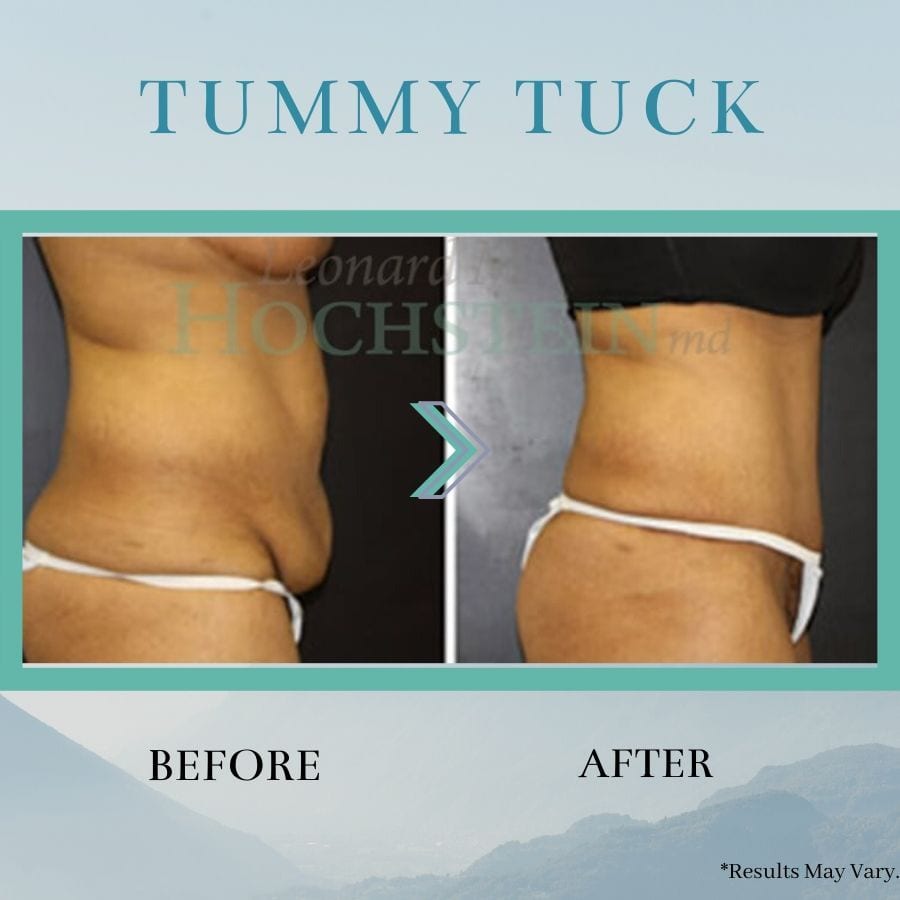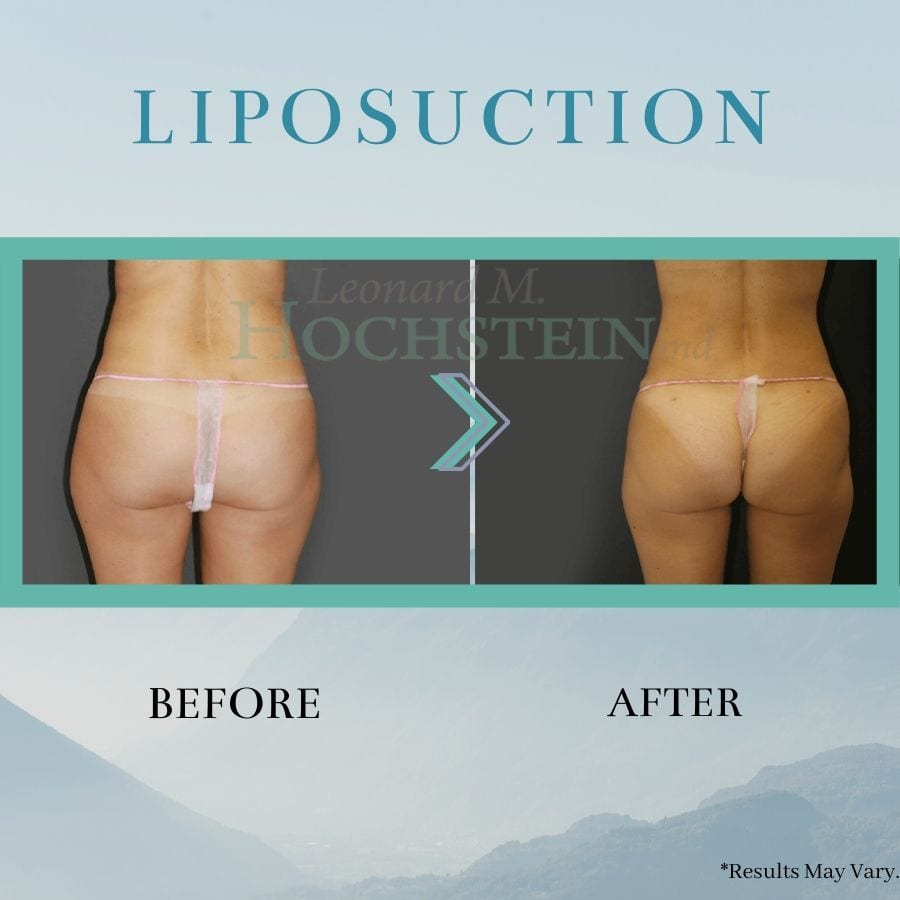The abdominal area is built to be our core. These muscles are responsible for keeping us upright by supporting our lower and upper bodies.
But age, pregnancy, or an unhealthy lifestyle can lead to the breakdown of those muscles as fat begins to accumulate and muscles begin to lax.
As our core deteriorates, the rest of our body can only follow. An expanding waistline has been linked to several health concerns, like diabetes and heart disease.
Eating a healthy diet and exercising can help greatly with reducing belly size, but fat cells can be stubborn—some cling on despite all efforts to get rid of them.
Cosmetic surgery procedures like a tummy tuck are expressly designed to target unwanted fat along the abdomen. Liposuction can also be used to achieve many of the same goals.
Tummy tuck surgery and liposuction can:
- Remove excess fat along the abdomen and other areas
- Remove and tighten sagging skin on belly, waist, “love handles” and abdomen
- Strengthen and tighten weakened abdominal muscles
- Smooth and tighten body contours
- Improve body outlines
Both procedures can be performed together in some cases, giving patients the ultimate improvement in body contouring and tightening.
It can be difficult to decide which procedure is the best option. Here are 3 tips that can help you decide which route to take:
Tip 1: Consult With Your Surgeon
Any surgical procedure will begin with a consultation. This process is a chance to gain valuable information about each procedure that will ultimately help make your decision.
Your surgeon will be able to tell you about skin and muscle laxity and how this applies to surgery. Skin with noticeable sagging, or muscles that bulge outwards due to weakness, are best suited for repair via tummy tuck surgery.
For patients who only struggle with a bit of extra fat, however, liposuction may be the better option. Liposuction may also result in less scarring, making it an appealing option for many.
Dr. Hochstein has years of experience performing both procedures, and his Miami office can be one of the best places to start your journey.
Tip 2: Manage Your Expectations
It’s been said that the secret to a good life is learning how to manage expectations. It’s also a good thing to keep in mind when going under the knife.
Plastic surgery helps thousands of people reach their appearance goals, and part of its success is learning what to expect from the procedures patients choose.
Learning how liposuction and tummy tucks are done is crucial to understand what to expect out of each procedure.
Both procedures address excess fat, but a tummy tuck is better suited for patients struggling with sagging skin or muscle laxity.
It’s also important to keep a realistic outlook on what both procedures can accomplish.
Liposuction and tummy tuck will not help you lose drastic amounts of weight or completely change your body shape.
They can, however, help sculpt bodies to reach a better appearance.
Tip 3: Prepare Well For Healing
Both procedures use incisions and will require a few weeks of downtime to completely heal. Knowing what to expect may help you plan for a smoother recovery.
With a tummy tuck, horizontal incisions are usually made in the lower belly to remove excess skin and fat before muscles are tightened, resulting in a flat, smooth appearance.
It can take several weeks to fully recover. In the first few weeks, patients may need to change surgical drains, wear compression bandages, and avoid any strenuous movement to ensure healing goes smoothly.
Liposuction recovery tends to go a little quicker, as tiny incisions are used instead of larger ones.
The smaller incisions are where cannulas, or small tubes, suction out the excess fat.
Most patients can go back to work within a week after liposuction. Patients are typically cleared to return back to exercising one week post-operative.
Results are typically permanent from both procedures, though patients may still gain weight as time passes.
Maintaining a healthy lifestyle is a great way to ensure results from either a tummy tuck or liposuction last as long as possible.
Interested in Learning More?
Call our office at 305-931-3338 or visit us online to schedule a consultation with Dr. Hochstein soon.

